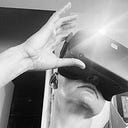Brands: It’s Time To Start Bringing VR to the Table Earlier
Co-author: Jenya Lugina
At least once a week, a version of the following article pops up in one of our feeds: [Brand] announces they are experimenting with VR with the release of [content]. When I check out the content, no matter what the quality, one thing is almost always consistent — it has nothing to do with the brand’s current messaging strategy. Sometimes it tells a story, sometimes it’s a gimmick, but more often than not, it just reads as an experiment. The message has nothing to do with the brand; rather, the message is, “we heard VR was a cool new thing we had to do, so we threw some money at folks who may or may not know what they’re doing, and they made a video that we probably don’t really know how to promote. We weren’t solving a business challenge or creating a coherent narrative; we were doing a thing we had to do, probably badly, and using that as an excuse to not do it again.”
The time for seeing VR as simply something to try out for the heck of it is over. When one of the most powerful executives in the world is on stage telling you he’s going to get a billion people in headsets, that’s the signal that VR is here to stay. But a stream of one-offs or fun side projects won’t get you where you need to be. To succeed in the coming media landscape, you need to think about VR as part of a more holistic approach — here’s the story we are trying to tell, and here’s our print strategy, our TV strategy, digital strategy, social strategy, and now VR/AR strategy. It is about innovating without making it look like you are innovating — making emerging tech seem as natural as the old school print ad or banner everyone knows.
Knowing the story you are trying to tell in VR must be the starting point; without it, everything falls flat. You’ve probably seen 360 video where someone just plops a camera in an open space and expects you to look around — it’s awful and boring, for the most part, because there is no story. It’s the VR version of that weird avant-garde student film someone showed you years ago, where you just don’t get it. Good VR requires guidance and presence; you can’t just drop someone in and expect them to know where to go. We use actors in commercials and taglines in ads for the same reason — we don’t just print a picture of a car with a list of features and a price and leave it at that. People need direction and stories to connect them with the product, otherwise everything is just as good as every other thing.
From now on, every initial meeting on a new concept needs to have a VR/AR expert in the room. Immersive creative needs to be part of the process from the start; otherwise, you’ll just be playing catch-up and trying to fit ideas in after the fact. Creatives and strategists need to start learning about VR and AR, but there’s no substitute for experts in the space, especially when it comes to direction and filming with a 360 camera.
VR as a medium is here to stay, and is the start of a moment we’ve only seen a few times before. It will not only disrupt existing industries; it will allow the growth of new firms that could be the next Amazon or Netflix. Lightfield displays, and eventually quantum computing, will enable us to have VR/AR in regular glasses (among other uses) and to perceive world in the whole new way. The time to start making content and working this into strategies is now — otherwise, you risk getting left behind.
